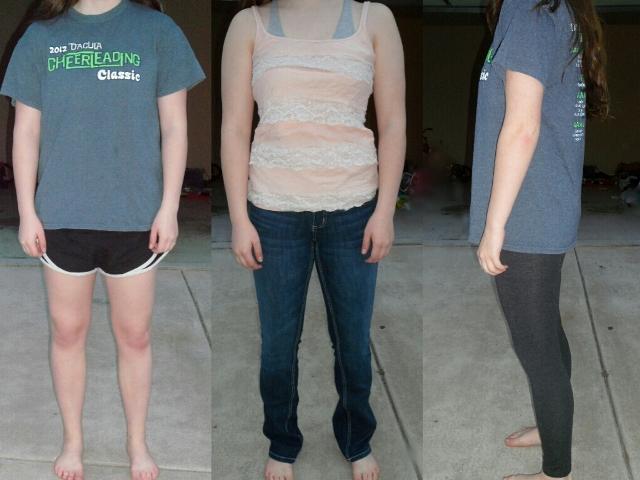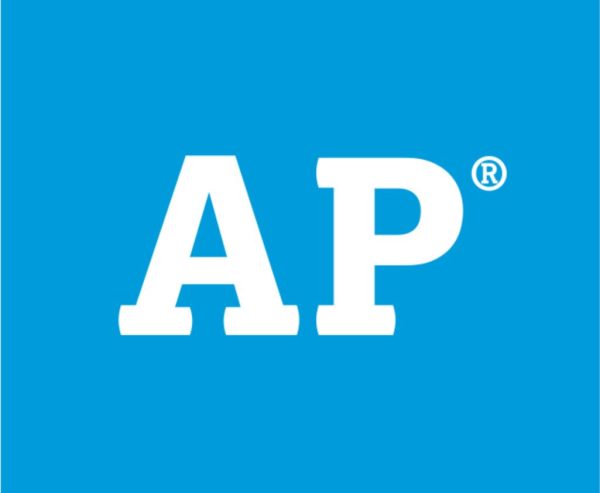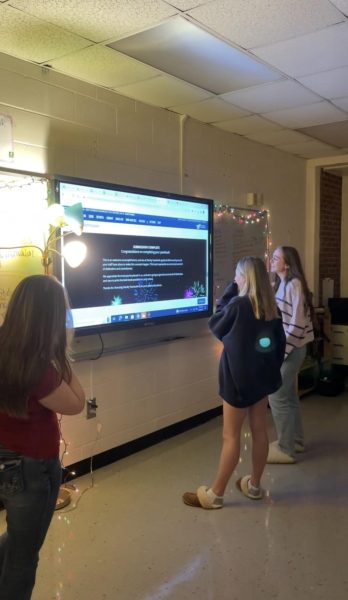What Not to Wear
This picture displays a student wearing North’s Forsyth’s most common dress code violations.
North Forsyth has two major rule infractions committed by students: tardies and dress code. 83% of surveyed staff members at North Forsyth dress code a student at least one to three times a day. Giving a student dress code can be anything from simply giving someone a warning to sending them to ISS. Compared to surrounding Forsyth County High Schools, North Forsyth’s dress code is surveyed to be the strictest despite the rules being placed by the county office (Niche).
According to NFHS staff members, dress code is put in place to help prepare students for future job situations and other professional settings; however, some staff members find it more of an inconvenience than a benefit. It was said in surveys that there are too many inconsistencies when it comes to dress code. For examples, leggings have recently been deemed appropriate to wear. One reason for this is that the many different fabrics of pants were hard to distinguish, and caused too many false alarms for a number of students. Those who enforce it are also inconsistent. Many staff members have different views on what is appropriate for a student to wear. This causes some students to either get into trouble for something that is actually allowed, or to get away with violations. It also puts male staff members in awkward positions if they have to tell a student their pants are too tight or they are showing too much cleavage. Other staff members do not put stress on dress code, so they allow things to slide. This eliminates many teachers from being enforcers. When surveyed, 60% of the staff members felt that behavior needed more attention than the dress code.
It seems that many dress code rules are conditional. Leggings may be worn, but only if the shirt worn with them is at least finger-tip length. Skirts and shorts may be worn as long as they come no higher than four inches above the knee. Tank tops may be worn if the strap is two fingers wide. Based on student surveys and Niche, a website that generates surveys and reviews about different schools across the nation from students, parents, and school administration, North Forsyth is the only school that is full of these “exceptions”. Other schools either ban it or, in many cases, allow it. Based on reviews on Niche, North Forsyth is rated as a B+ school, and place all other schools in the Forsyth County District at an A or A-. Reviews restate the fact that North Forsyth’s dress code is much stricter than the surrounding high schools. It is reviewed as the only school with a specified measurement for the length of shorts, skirts, and dresses. Surrounding schools follow the “fingertip rule” described in the Forsyth County School Code of Conduct (FCS 16).
Dress code is enforced strictly because it is said to be a major distraction for students; however, of 20 students surveyed in grades 9th through 12th, zero said that dress code was offensive to them, and that the number one most offensive violation was the usage of drugs on campus, with PDA being a close second. The same group of students also stated that there needs to be more focus on drug usage. Although the dress code came in second, students did not think it needed more enforcement, but fairness and efficiency. For example, female students, as well as some male students, believe the dress code falls on the side of sexism. The reason for this is that it is far easier for females to get dress coded over males. It starts on the first day of school: “Boys, your clothes cannot be too baggy and your tank top straps must be this wide.” “GIRLS, you know those shirts you love wearing?” “GIRLS, we will not be allowing leggings or yoga pants.” “GIRLS, you need to make sure your skirts, shorts, dresses are four inches above your knees.” “GIRLS, you are distracting to the boys.” Basically, if a student’s figure is over-defined, or limbs can be seen, it is a violation. A female student surveyed stated that all of these rules make her feel objectified. Students surveyed, both male and female, agree that it is not as distracting as administration makes it seem, and they blow it out of proportion.
Of the students surveyed, 53% of them had been dress coded before, and some experienced multiple incidents. One student reported that she was dress coded a total of 13 times in the 2012-2013 school year. Of these 13 times, she was found to actually be in dress code 11 times. In the fall of 2013, she had already been dress coded another seven. It caused her to miss class time and instruction on multiple occasions because she was grabbed in the hallway during class transitions and taken to the front office.
This is just one example of this rule being taken too far. Students feel a ridiculous amount of stress simply walking through the hallway or the lunch room. Having such a strict dress code provides unnecessary hassles for things such as shopping for clothing. Due to some popular trends, “appropriate clothing” can be hard to find in many favorite stores of teenage students. Are they supposed to wear jeans and a t-shirt every day? Our school is not supposed to feel oppressive. It is supposed to be an environment where a student may feel comfortable being themselves and using self-expression. Many students take pride in what they wear, and it gives them a sense of confidence to dress up or look nice; however, many feel it has become too much of an inconvenience to try to stay in code while dressing up.
Problems associated with dress code are not only social; it effects a student’s ability to learn. This is not because a student sees someone with pink hair and suddenly they are rendered helpless to distraction. When a student is dress coded, and they are unable to change or have someone bring them clothes to change into, they are sent to ISS for at least one day. Let that sink in. A student’s outfit can determine if they are given the privilege to learn that day. This is not limited to only major violations. Depending on who dress codes the student, it could be for minor violations as well. According to a few students who experienced ISS, it is a study hall for them. By “study hall”, they mean a time for them to look productive. Yes, some teachers will give them work to do, but they have no way to actually learn. How is ISS any better than someone being out of code? They both result in the same thing, don’t they? A lack of learning? Students in ISS miss lectures and are unable to ask the teacher questions for clarification which places them behind in their learning. Even if it is only for a single day, it makes a difference.
How do we define professional? Sweatpants are not technically professional, but they are allowed. Should we not be able to wear sweatpants anymore? We do not need a large amount of restrictions. We need more freedom. Are we not supposed to be able to choose for ourselves? We as students are held as responsible for our decisions, and it is not the school’s responsibility to parent a student. Yes, there are parts of the dress code that make sense, but, many parts are over the top. Yes, it is important to enforce the rules, but, there is no need to pull a ruler out. Yes, it can appear more presentable and professional, but, high school is the time for students to be expressive. This is not military school. This is not an executive job. This is a public school. Is it really worth the hassle?
______________
Works Cited
FCS Department of Safety and Discipline. “2011-2012 code of Conduct and Discipline Procedures Grades 6-12”. Forsyth County Board of Education. (2011): 16. Web. 14 March 2014. ”Forsyth County Schools”. Niche K-12 Schools. 2014. 7 March 2014. http://k12.niche.com/d/forsyth-county-schools-ga/

Reilly Deckard is constantly listening to something. She is full of dreams and desires that she works towards every day. She lives for the people she loves...











